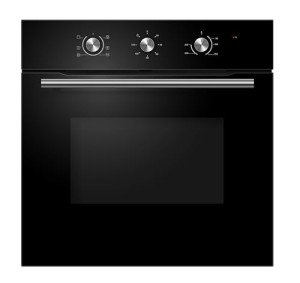The Comprehensive Guide to Built-In Ovens
Intro
Built-in ovens are a staple in modern-day kitchen areas, combining elegance with performance. They provide a sleek visual and efficient cooking abilities, making them a favored option for homeowners and cooking lovers alike. This article explores the benefits of built-in ovens, their numerous types, crucial functions to consider, setup suggestions, and upkeep guidance, together with frequently asked concerns.
Advantages of Built-In Ovens
Built-in ovens featured a selection of advantages that add to their appeal. Here are some essential advantages:
- Space-Saving Design: Built-in ovens are designed to fit perfectly into cabinetry, permitting a more organized and space-efficient kitchen design.
- Visual Appeal: They supply a sleek and modern-day appearance that can boost the overall design of the kitchen.
- Enhanced Functionality: Built-in ovens frequently feature sophisticated functions and technologies that support different cooking techniques.
- Boosted Cooking Experience: Many built-in models include self-cleaning functions, temperature level probes, and programmable settings, enhancing the cooking experience.
- Increased Property Value: A well-designed kitchen with built-in appliances can boost the value of a home.
Kinds Of Built-In Ovens
Built-in ovens come in numerous types, each developed to fulfill different cooking choices and needs. Here are the primary types:
| Type of Built-In Oven | Description |
|---|---|
| Single Oven | A single, standalone oven for conventional baking and roasting. |
| Double Oven | Combines 2 ovens in one unit, enabling numerous meals to cook at different temperature levels. |
| Wall Oven | Set up in the wall, freeing up counter space, perfect for little kitchens. |
| Convection Oven | Utilizes fans to distribute hot air for even cooking, improving the results of baked items. |
| Steam Oven | Utilizes steam for healthier cooking options, maintaining nutrients in food. |
Key Features to Consider
When picking a built-in oven, a number of functions can affect efficiency and usability. Here are some vital functions to bear in mind:
Cooking Modes
- Bake: Traditional baking with bottom heat.
- Broil: Top heat cooking appropriate for browning and crisping.
- Convection: Circulates hot air for even cooking.
- Steam: Uses steam for much healthier cooking choices.
Size and Capacity
- Requirement sizes usually range from 24 to 30 inches broad.
- Consider the internal capability-- it can range from 3 to 6 cubic feet, permitting different meal sizes.
Controls and Smart Features
- Touchscreen Controls: Easy shows and changes.
- Smart Technology: Connectivity functions permit remote monitoring and control through mobile phone applications.
Energy Efficiency
- Try to find models with ENERGY STAR scores, showing lower energy consumption.
Security Features
- Functions like car shut-off and child locks improve security during operation.
Installation Tips
Setting up a built-in oven may need expert help, however here are some basic tips to keep in mind:
- Choose the Right Location: Ensure there's enough space in your cabinets for setup, remembering ventilation requirements.
- Electrical Requirements: Check that your kitchen's circuitry fulfills the oven's power requirements, especially for electric designs.
- Level the Oven: Ensure the oven is level to promote even cooking.
- Protect the Oven: Attach it securely to the cabinetry to avoid movement during usage.
Upkeep Advice
Routine maintenance is important for the longevity and performance of a built-in oven. Here's how to keep it in top shape:
- Regular Cleaning: Wipe down surfaces after each usage and perform deep cleaning regularly.
- Check Seals: Inspect door seals for wear and guarantee they preserve an airtight fit to enhance energy performance.
- Calibrate Temperature: If food regularly comes out overcooked or undercooked, think about recalibrating the oven's temperature level settings.
- Professional Servicing: Schedule annual check-ups with a skilled professional to preserve optimal efficiency.
Frequently asked questions
What is the distinction between a built-in oven and a freestanding oven?
Built-in ovens are designed to be set up within cabinets, offering a seamless look. On the other hand, freestanding ovens are standalone units that typically come with their own cooktop.
Are built-in ovens more costly than freestanding designs?
Normally, built-in ovens can be more pricey due to the included installation costs and advanced features. However, costs differ widely based on brand name, size, and functionalities.
Can I set up a built-in oven myself?
While it is possible to set up a built-in oven yourself, it is recommended to employ an expert to guarantee correct installation, particularly if adjustments to cabinetry or electrical work are needed.
How typically should I clean my built-in oven?
It is advisable to clean your built-in oven frequently after heavy usage. For much deeper cleanings, utilize the self-cleaning function if available or periodically carry out manual cleansing to prevent accumulation.
Built-in ovens are an important addition to any kitchen, offering both aesthetic appeal and advanced cooking capabilities. By comprehending their types, functions, installation, and maintenance requirements, property owners can make informed choices that boost their cooking experience and boost the total worth of their homes. As built in ovens and hobs continue to develop, built-in ovens will likely remain a popular choice for contemporary homes.

